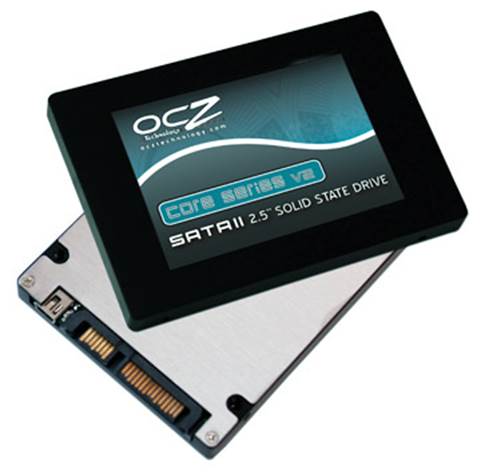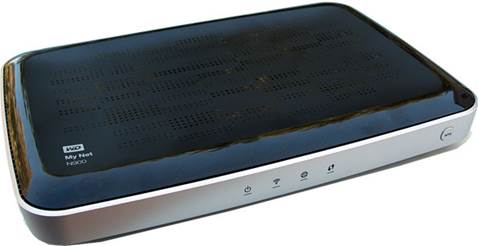NAS devices contain a variety of
technologies, none of which should be especially unfamiliar to any computer
user. Look for Ethernet support (especially gigabit Ethernet) and on some
models, Wi-Fi (although for reasons explained further on, don’t worry too much
about that.) Software-wise, you may want to check for iTunes compatibility, a
UPnP media server (a standard protocol for media streaming to devices and
applications) and some ability to stream over the web too.

Software-wise,
you may want to check for iTunes compatibility.
You may also be interested in extra online
features. Some NAS devices come with free online cloud storage, which will
automatically back up your data when your Internet connection is idle. Indeed,
you can get as much as 25GB of online storage ‘free’ with some NAS devices,
although they do tend to be priced more highly to cover such an expense.
In high-capacity models, look to see
whether you’re buying a single-bay device or a dual-bay device. A 2TB NAS can
contain either one 2TB drive or two 1TB drives. The former is likely to be
cheaper, but the latter gives you better data integrity (backups can be kept on
separate physical drives or duplicated) as well as the potential to run disks
as a RAID array, which will give better speeds if multiple users are accessing
the data together.
It’s up to you which you favor, but we’d
guide home customers with one or two users towards the cheaper, single-drive
solution, and larger networks towards a multi-bay setup.
Finally, if you see hardware specs for
things like cache and CPU, don’t get confused - NAS devices have their own
internal controllers and processors (much like a router), so in that sense, the
processor speed lets you know how well that software performs. Similarly, the
cache tells you how well disk speeds can be maintained, because more cache
means better performance.
Don’t get too hung up on paying extra for
the hardware alone, though. You’re unlikely to notice a huge leap between the
low- and high-end processors or cache levels in a home environment. They’re
only likely to have tangible effects if you have a lot of simultaneous users.
Is Now The Right Time To Buy?
NAS devices are still in their infancy, at
least as far as home iterations of the technology are concerned. To be frank,
they’re still more expensive than they should be. Buying a bay and drive
separately means you can save almost $160, so it’s not sustainable in the long
term for the already-assembled devices to cost as much as they do. Similarly,
the price of storage is plummeting, and in a year or two, 1TB mechanical hard
drives are going to look almost quaint. By then, faster, more reliable and more
ecological SSD drives of similar capacity won’t be much more expensive.

By
then, faster, more reliable and ecological SSD drives of similar capacity won’t
be much more expensive.
The upshot is that if you’re waiting for
the ‘right’ time to buy a NAS device, it’s not going to come for a year or two
yet. But if you want to buy one now, it makes sense not to spend too much on
one. Even if you buy a cheap 1TB device, by the time you’ve reached the limits
of what it can offer, the trend of lowering prices will make it cheaper overall
to buy a 1TB device now and a 2TB later than to buy a single 2TB one now.
“We strongly recommend doing your research
before spending any money”
Again, though, this brings us back to the
same point we’ve been making a lot in this article: buy an empty bay and fill
it yourself. You’ll save a lot of money, it’ll be easier to upgrade in the
future, and you’ll get some reuse out of the hardware. As long as you make sure
it contains sufficiently fast SATA 6Gbps and USB 3.0 connectors, the bay will
remain useful far longer than a 1TB NAS alone will.
What AreThe Technical Constraints?
NAS devices need three things: power, space
and a network to connect to. Power and space are easy to account for, but more
crucially, NAS devices need a network available before you buy them. Usually,
this just means a router that you can connect the device to using either a USB
or Ethernet connection, but high-end examples may give you the option to use
wireless. We’d advise against that, though, unless you’re running a rock-solid
network with consistent speeds. Wireless communication can be a serious
bottleneck to access and transfer speeds, especially if the signal is weak or
interfered with.

Power
and space are easy to account for, but more crucially, NAS devices need a
network available before you buy them.
A NAS device itself does have technical
limitations that ‘local’ storage doesn’t too. For example, a single hard drive
is fast enough when used by one person, but remembers that two, three, or even
more people can access network storage simultaneously.
This is why more setups that are expensive
duplicate the contents in a RAID array; it avoids the problem of drives slowing
down when trying to serve multiple users, because the same data can be served
from different physical drives keeping speeds high.
In general, home setups don’t need a
RAID-capable NAS, but if you’re a small business or office, you may want to
make use of it just to lower waiting times and prevent performance issues.
What’s The Alternative?
Network-attached storage has its faults.
It’s expensive and hard to maintain or upgrade. If something goes wrong, your
only option is to replace it - often at great expense.
An alternative to buying a NAS device is to
buy a router, which has the ability to connect to standard, external storage.
Attaching a storage device effectively turns the router itself into its own NAS
device. Such routers are more versatile than dedicated NAS devices, and usually
connect to storage over USB, meaning that you can plug in a powered external
hard drive as normal or avoid using up another electrical socket by using the
USB port’s internal power supply to support a USB or solid-state drive. Keep in
mind that these storage devices are much easier to swap out if you want to
attach or share different ones at different times, and are also cheaper to
replace if they break or fail.

Western
Digital My Net N900 HD Dual-Band Router
Another alternative is to go the opposite
route entirely and aim for even greater integration. It’s possible to buy
routers that have network attached storage built into them, such as the Western
Digital My Net - a wireless router with 2TB of the company’s own storage
technology (based on the ‘My Book’ series) built-in. Good for saving space and
undeniably simpler than adding an extra device to your network but also a lot
more vulnerable to data loss if something goes wrong.
There are also the more low-tech
alternatives: you could add more hard drives into an existing networked PC and
share them over the network. However, in our opinion, doing that misses what
makes NAS storage desirable in the first place - that you can access it at any
time, without the need for a specific device to be active on the network. If
you have a spare system lying around, you could turn it into a dedicated file
server, although it’d be significantly more bulky (and more expensive to run!)
than a dedicated NAS device.